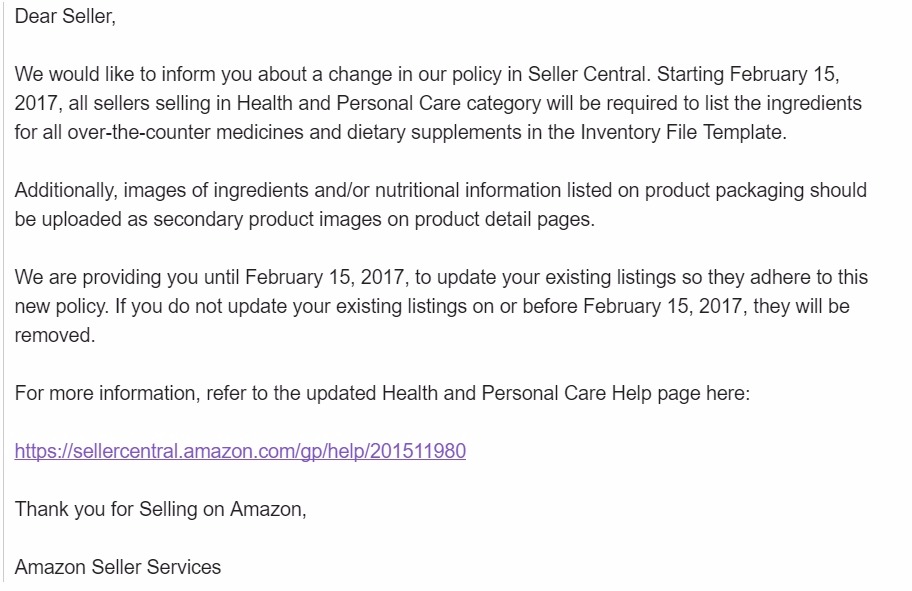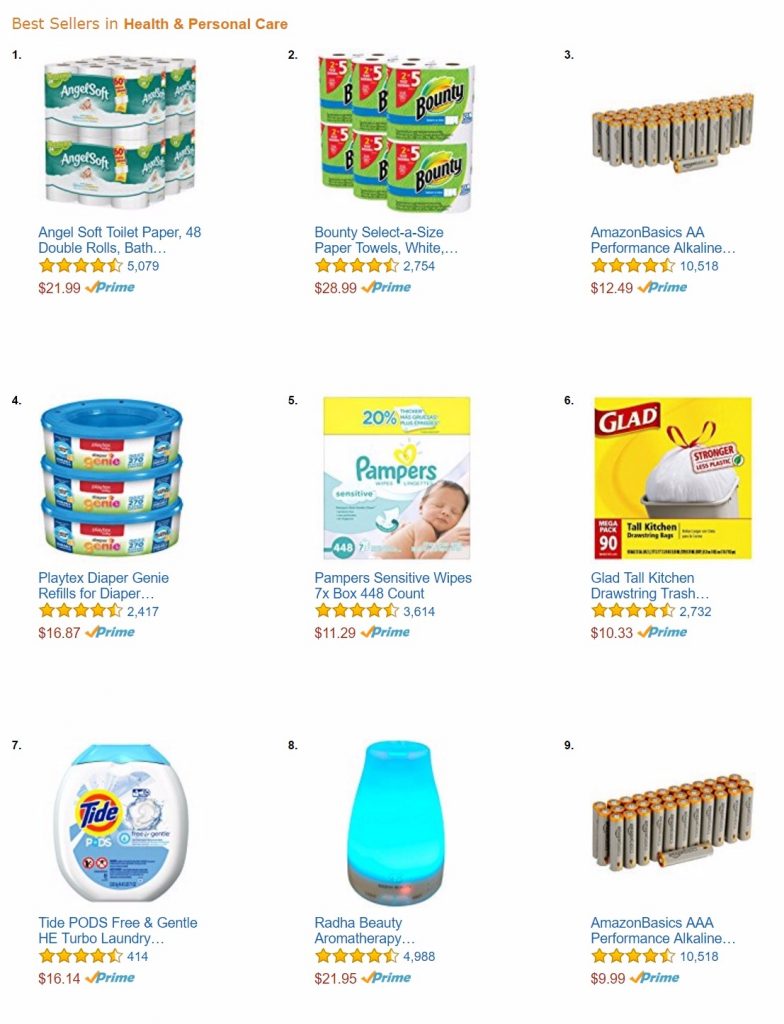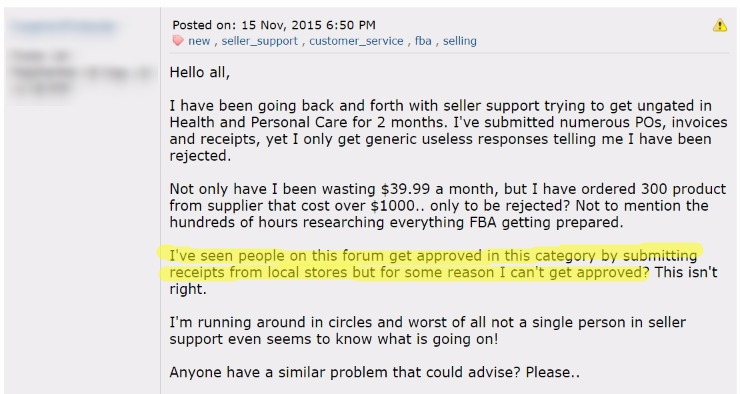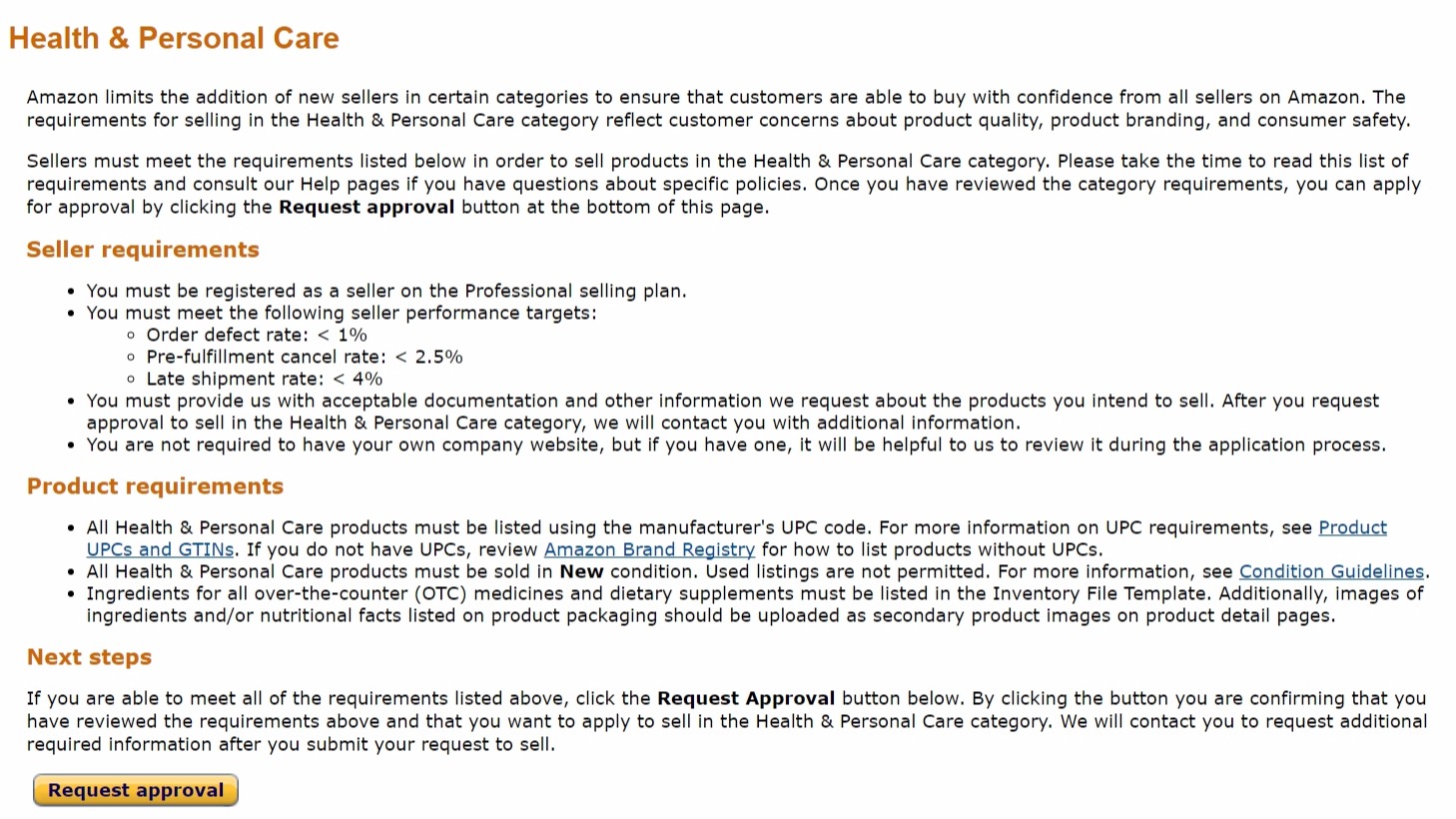Amazon Health & Personal Care: Why is It So Hard to Get Approved?

If you started selling products in the Amazon Health and Personal Care category in 2013, you’d barely recognize the process to start selling on there now. Basically, it’s now much harder for sellers to get access. And that’s a good thing.
Amazon recently added two new requirements for sellers in this category.
Sellers must list all ingredients for over-the-counter medicines and dietary supplements on the backend, and show the back of the packaging (ingredients and nutritional information) as the second image on product listings by February 2017.
Here’s the email you may have received:

If you haven’t made the changes yet, there’s still have a little time, but you better hurry.
So why is Amazon coming down so hard on sellers in this category? Should you even pursue selling on the Amazon Health and Personal Care category, or is the price too high?
CPC experts weigh in.
Amazon makes it difficult to get ungated in this category on purpose.
They state the facts explicitly on the Health & Personal Care requirements page:

Amazon’s just looking out for their customer experience. And in the Health and Personal Care category, they’re also paying attention to something bigger–customer safety.
Counterfeit products with unauthorized ingredients can pose a serious health risk, and these new requirements will likely deter careless or counterfeit sellers.
 “You’d be upset if you bought a counterfeit pair of Nike shoes or a fake leather purse on Amazon,” says David Cooley, Manager of Marketplace Channels at CPC Strategy.
“You’d be upset if you bought a counterfeit pair of Nike shoes or a fake leather purse on Amazon,” says David Cooley, Manager of Marketplace Channels at CPC Strategy.
“Now imagine how upset you’d be to find out that “Aveeno” skin moisturizer you’ve been applying to your body every day is actually counterfeit.”
The thing is, customers don’t just get upset at individual sellers if they get an allergic reaction to a counterfeit product.
They get upset at Amazon–and may be less likely to purchase that product (or other health products) on Amazon in the future.
When you understand Amazon’s name is at stake, it’s easy to understand why they’re adding restrictions.
The other reason the Health and Personal Care category is so difficult to break into is because it’s extremely lucrative.
Sellers know this, and that’s why competition is so fierce. Just check out the best sellers in this category:

Only one of these–Radha–isn’t a ready recognized household brand, and AmazonBasics has clearly taken a liking to this space.
James Hyatt, a Marketplace Channel Analyst at CPC Strategy, has noticed a “gold rush” mentality in the past few years amongst sellers in the Health and Personal Care category.
 “The profit margins can be huge in this category, so you the demand is great. That drives a lot of entrepreneurs to sell there, as well as counterfeiters, which makes it harder to compete.
“The profit margins can be huge in this category, so you the demand is great. That drives a lot of entrepreneurs to sell there, as well as counterfeiters, which makes it harder to compete.
Back in 2014, Sellers didn’t have to worry as much about getting past restrictions, and the competition wasn’t as steep. Since then, Amazon has tightened up restrictions not just to block out counterfeiters, but less serious sellers as well.”
If you’re planning on breaking into the Health and Personal care category for the first time, the one thing you should know is that it won’t be easy or fast.
Several years ago, you may have been able to get away with using a wholesaler and providing receipts to sell in this category.
Even mom and pop resellers could succeed by heading to big box retailers, picking up 5-10 products, and showing the receipt as proof. That’s changed now, and you can see sellers lamenting this across forums:

Now, you must show that you’re buying products from a legitimate manufacturer (specifically from the U.S., probably not China to start) and prove you’re purchasing significant quantities of products.
“Basically, [Amazon] wants to see that you’re moving inventory and you have a business running before you jump into the game,” explains Hyatt. “If you’re planning on getting into this category, you should have at least $2-3,000 to invest in these invoices. And if you’re selling a niche product, it’s a lot harder to get ungated.”
Here are Amazon’s requirements (with the most recent update included) for sellers:

The font’s small, but don’t worry, we’ll break it down below.
“[Amazon] needs to know those products will always be available,” says Hyatt. “A wholesaler may have products in stock now, but if you run out and the product is a hit on Amazon, you might not be able to fulfill orders. Amazon knows that’s a risk.”
The inventory minimum is another way for Amazon to weed out the non-serious sellers and counterfeiters, who would either have to forge an invoice or be forced to pay up some serious cash to succeed in this category.
Speaking of invoices, be careful what you submit–a lot of sellers don’t get past the ungating stage because their invoices don’t fit the bill (no pun intended).
“There is a specific format your invoice needs to align with, and Amazon doesn’t make it very clear,” says Hyatt. “One thing I know is that you have to have the word “Invoice” on your invoice. If you don’t have that, they won’t even consider what you have submitted.”
One final thing–we wish we didn’t have to say this, but seriously, don’t counterfeit your invoices.
Amazon FBA agents are experts at identifying fake invoice templates, and you will likely get suspended or banned for trying.
Even if they don’t catch you now, they may catch you later on. We’ve heard of brands that counterfeited invoices, were ungated in a category, then were gated again a few months later once the fraud invoices were flagged.
“Follow Amazon’s rules, and take the time to get ungated correctly in the beginning,” says Hyatt, “Because when you get access, you will have the advantage.”
Unfortunately, even with following these tips, there’s no guarantee.
“Even if you do everything right, Amazon still may not approve your invoices.” says Cooley. “They are very particular. Getting ungated is not easy–it’s an expensive and time-intensive process.”
So let’s think outside the box.
The first thing you should do is think about what your motives are. More and more, Amazon’s favoring companies that are invested in their brand, and not just in moving products and making money. And in a category this competitive, a recognizable brand name can really give you an edge over the competition.
“Work on building your brand presence outside of Amazon,” says Cooley. “If no one has ever heard of your brand before seeing your listings on the marketplace, you’ll have a very difficult time building a customer base.
Use platforms like Facebook, Instagram, email, etc. to build your brand and build the demand for it–then use Amazon to capture that demand.”
Another way to get an edge in the category? “Niche down”, says Hyatt.
“In other words, look for niches in the category that haven’t been completely exploited. You’ll have a better chance of being successful.”
Remember what we said earlier about Amazon weeding out the non-serious sellers? Well, it’s time to ask yourself if you’re one of the serious ones.
“You have to compete against huge brands such as Olay, Aveeno, Neutrogena, and St. Ives, all brands who are investing millions of dollars in advertising and marketing.
On top of that, there are countless private labelers on the marketplace that understand the competitive nature of the category and will sacrifice ROI and profitability just to get their brand seen.”
Be prepared to invest time and money up front, Hyatt adds. The ungating process could take over six months.
“Really think about why you’re getting into selling on Amazon, “says Hyatt. “Be honest with yourself as far as your intentions. If you want to [sell in this category] for the long haul, then go for it.
If you aren’t sure or just want to test it, start with another category that’s either ungated or has less competition, or think about other selling channels.”
